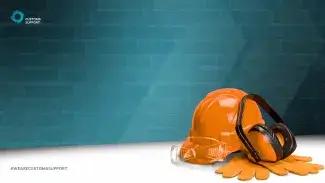First, we’ll need some tools
From angle grinders to wrenches, there are 1,000s of tools out there for builders. Many of these are in HS chapter 82, with over 120 tools listed from HS heading 8201 through 8207.
And, that’s just the hand tools. We need some bigger ones, too.
Many of the machines and components for construction can be found in chapter 84, with HS heading 8429 containing bulldozers, levellers, diggers, and some other construction machines. The customs in manufacturing these machines is already a large project before they get to site.
The import duty varies by both code and origin for close variations of some tools and machines. Therefore, getting the correct goods classification is essential to ensuring you remain compliant and pay the right tax.
Now we have our toolkit, let’s build this house!
A concrete footing and foundation
Both the footing and foundation are generally made with concrete, which is a compound made by mixing cement, water, sand, and rock.
Although sand can be found in most countries, not all of it is the same type nor suitable for construction. This is why sand is heavily traded around the world, with an estimated $1.28 billion (€1.17 billion) of sand traded in 2022. Due to the nature and environmental risks of moving soil, you may need to obtain an import permit for the type of sand or origin of your shipment.
Cement is also a compound, a combination of lime, silica, alumina, magnesia, sulphur trioxide, alkaline, iron oxide, and calcium sulphate. These ingredients do not combine naturally, and the process involves mining, crushing, sintering (binding with heat), and then grinding into cement.
Due to the embedded carbon emissions and energy consumption involved in making cement, it is a Carbon Border Adjustment Mechanism (CBAM) commodity. Because many materials are CBAM goods, customs and the construction industry are both working to reduce and offset emissions where possible.
When importing cement, you need to keep records and submit CBAM reports every quarter. From 1st January 2026, you will need to purchase CBAM credits to offset the emissions in your products. This is separate from import duty and VAT, so bear it in mind when making accounting calculations.
Brickwork
Now we’ve laid our foundations, let’s get these walls up. Did you know that many countries in the world are unable to mass produce bricks because the soil is not right for baking them? This is why the brick industry is so large despite the mechanism for creating them being simple.
The UK buys the majority of its bricks from the EU, which means an EU export clearance and UK import clearance have been required since January 2021.
Customs Support provides end-to-end customs clearance, meaning that our declarants work on both sides of the EU/UK border to give you timely, accurate, and compliant clearances.
Steel girders
Open plan rooms are much preferred to closed off ones, so let’s not limit our space with too many internal walls. However, we still need to hold up the ceiling / floors above. Enter, the steel girder.
As well as being another CBAM material, steel is often a target for countervailing and anti-dumping duty. This is why it is essential for you to know the real country of origin when arranging to buy steel from abroad.
Another reason to know the real origin of your steel is that there are sanctions in global supply chains. Currently, there are sanctions on Russian iron and steel that are historical, meaning that there must be no trace in your finished articles – even if the origin has changed.
Timber-framed roof
With the walls up and the floors supported, it’s time to put the roof on our house.
Did you know that – despite these all being tools and materials – that health authorities are also involved when it comes to customs and construction?
Importing timber carries a risk of contamination, whether by pests, moulds, pathogens, or the introduction of foreign seeds into domestic soil. This is why forestry commissions require certification that shows your timber has been treated.
There are also sustainability requirements for many timber products to prevent illegal logging, or to show that the source is a sustainable forest. Paperwork such as a FLEGT licence, or a PEFC declaration, are present throughout the supply chain.
(Related: how customs helps supply chains be more environmentally friendly)
A slate roof
Like bricks, slate is imported into the EU and UK from all over the world – depending on the colour you want. However, another consideration is that the origin of your slate may cost you more in import duty.
Commodity code 6803001000 is for roofing and wall slates, both in the EU and the UK. In the UK, there is no import duty. In the EU, you must pay import duty for third-country origins that do not hold preference.
Glass windows
Your commodity code will change depending on whether your glass is single glazed, double glazed, reinforced, or coloured. Additionally, there are variations for whether you are importing them framed, unframed, or unframed but otherwise worked. It is important to get your code right so that you pay the correct taxes, and beware that the variations are not all in the same commodity chapter.
Plastic pipes
Similar to glass windows, plastic pipes have a multitude of factors that go into classification. The type of plastic used, the diameter, and the intended pressure are all considered when selecting the correct commodity code.
Installing the electricals
Whether it’s the wiring, the fuse board, the plug sockets, the light sockets, the lightbulbs, or the smart meter – everything needs to be classified correctly when it comes to customs and construction.
Furthermore, foreign suppliers of electronics and components can be subjected to recalls and blockages if their products are reported to be faulty or a risk of injury. Check with national authorities to double check, such as the Office for Product Safety and Standard (OPSS) in the UK.
Need someone to build with?
Customs and construction are both broad subjects. Thankfully, Customs Support can help you with navigating your obligations and risks when importing your building goods.
Strategically positioned across the EU and UK, we are here to give you the guidance and service you need on classification, customs clearance, CBAM, and more.
If you need a CBAM-competent customs partner who can help you in any area of Europe, contact us for more information.














